分类号 密级
UDC 编号
中国科学院研究生院
博士学位论文
针对热红外和微波数据的地表温度和土壤水分
反演算法研究
毛 克 彪
指导教师 施建成研究员 中国科学院遥感应用研究所
申请学位级别 理学博士 学科专业名称 地图学与地理信息系统
论文提交日期 2007.1.1 论文答辩日期 2007.4.9
培养单位 中国科学院遥感应用研究所
学位授予单位 中国科学院研究生院
答辩委员会主席 李增元
�
Ph.D. Dissertation Submitted to
The Graduate School of the Chinese Academy of Sciences
The Study of Algorithm for Retrieving Land Surface Temperature and
Soil Moisture from Thermal and Microwave Data
Candidate: Kebiao Mao
Adviser: Jiancheng Shi, Professor
Institute of Remote Sensing Applications,
The Chinese Academy of Science
January 2007 in Beijing
�
摘 要
地面温度和土壤水分是反映土壤—植被—大气系统能量流动与物质交换以
及土地资源和环境管理的重要参数,也是地球表面能量平衡和温室效应的两个重
要指标,是区域和全球尺度地表物理过程的一个关键因子。因此,地面温度和土
壤水分在气候、水文、生态学和生地化学等许多领域中是非常重要的。但是依靠
地面观测站的观测来大面积地获取地表温度和土壤水分参数是不现实的。然而借
助于热红外遥感、微波遥感影像 ,可以方便快捷地获得大面积 ,甚至全球的地
温资料,且数据更新快 ,成本低廉。
在简要介绍有关热红外、微波遥感发展和概念的基础上,分析和探讨常用的
地表温度和土壤水分的反演方法,并对反演精度的影响因素进行了分析。针对
ASTER、MODIS、AMSR-E 传感器的波段设置特点和传统反演算法中参数求取
的局限性。我们对地表温度和土壤水分的反演算法做了一些研究,本文具体内容
如下:
(1) 热红外波段的大气透过率是地表温度反演的基本参数。本项研究分析近
红外波段估计大气水汽含量的方法,并进一步研究大气水汽含量与热红外波段的
大气透过率关系,计算得到 MODIS/ASTER 热红外波段的透过率。
(2) 现有的地表温度反演方法主要有劈窗算法和单窗算法。这些算法都是针
对具体的传感器和特定的参数条件开发的。本项研究在分析这些算法的推导过程
的基础上,对 Planck 函数进行线性简化,提出了适合于 ASTER 和 MODIS 热红
外波段的地表温度反演方法。其中最关键的是,我们对这些算法的参数进行了重
新确定,使之适合于 ASTER 和 MODIS 数据,从而形成了从 ASTER 和 MODIS
数据中反演地表温度的劈窗算法。
(3) 在以往的单窗和劈窗算法中,通常假定发射率已知,这使得地表温度的
反演精度在先验知识不够的地区受到限制。由于发射率在 8.475~11.65µm 范围内
发射率变化很小,而且在局部范围内近似线性,因此本文针对这情况。对 ASTER
的第 11、12、13 和 14 波段,MODIS 29、31、32 建立辐射方程组,同时对相应
的发射率建立线性方程组。联立方程从而形成针对 ASTER/MODIS 数据的地表
I
�
温度和发射率同时反演的多波段算法。为了提高反演精度,我们用神经网络对反
演算法进行了优化计算。利用 MODTRAN4 模拟数据精度分析评价表明精度很
高,与 NASA 的标准产品和地表实测数据比较分析表明算法精度也很高。
(4) 在分析 Aqua 卫星多传感器特征的基础上,利用 MODIS 的温度产品和
AMSR-E 不同通道之间的亮度温度建立反演地表温度的反演方程,从而克服了以
往需要测量同步数据的困难。通过各通道的回归系数分析表明,不同的地表覆盖
类型的辐射机制是不同的。要精确地反演地表温度,至少对地表分成三种覆盖类
型,即雪覆盖的地表、非雪覆盖的地表和水覆盖的地表。以 MODIS 地表温度产
品作为评价标准,对于验证的样本数据,本文建立的统计方法的平均精度在 2-3°C
左右。由于地面非常的复杂,由理论模型模拟的数据不可能非常好的描述反演方
程。为了提高算法的实用性,还需要进一步对云覆盖和不同辐射机制的地表类型
的混合像元进行研究。神经网络不需要推导具体的反演规则,这些条件决定了神
经网络是被动微波地表温度反演的最佳选择之一。分析结果表明神经网络能够被
很好地用来从被动微波数据 AMSR-E 中反演地表温度。
(5) 用 AIEM 模型针对被动微波数据 AMSR-E 进行了模拟分析结果表明:在
给定粗糙度条件下,土壤水分和发射率存在很好的线性关系;在不同的土壤水分
条件下,均方根高度和相关长度对发射率的影响基本相同。我们定义了极化指数,
模拟数据表明, 18.7GHZ 与 10.7GHZ 的垂直极化指数与土壤水分有很好的关系,
而且部分地消除了土壤粗糙度的影响,R-Square 大约 0.98。同时,我们推导了
标准化微波指数近似等于标准化亮温指数。分析表明通过标准化发射率指数和标
准化微波指数建立土壤水分反演算法是可行的。同时我们对算法进行了敏感性分
析,分析表明当有降雨时,算法比较敏感。用 SMEX02 的实验数据验证分析表
明,相对于实验数据, 算法精度大约是 25.9% 。算法低估了土壤水分,而且算
法受植被的影响比较大。因此要提高算法的适用性,需要根据当地的实测数据对
反演结果做进一步修正。对 SMEX02 实验场,修正后的精度为 6.5% 。最后,
我们对中国地区的两景 AMSR-E 进行了实际反演分析,结果表明反演结果符合
实际土壤水分分布情况,表明算法可行。
关键词: 亮度温度,地表温度,土壤水分,ASTER,MODIS,AMSR-E
II
�
ABSTRACT
The extensive requirement of temperature and soil moisture information on a large scale for
environmental studies and management activities of the Earth’s sources has made the remote
sensing of land-surface temperature (LST) and soil moisture two important issues in recent
decades. Many studies have shown that land surface temperature and soil moisture are two key
parameters
in numerical weather-prediction model
that
lead
to significant forecasting
improvement in the physics of land surface processes on regional and global scales, combining the
results of all surface-atmosphere interactions and energy fluxes between atmosphere and the
ground.
In this paper, we introduce the theoretical basis for the remote sensing of LST and soil moisture,
some concepts of thermal and microwave remote sensing. We will propose new algorithm for
retrieving land surface temperature and emissivity from ASTER, MODIS, AMSR-E, and for
retrieving soil moisture from AMSR-E. The details are as following:
(1) Atmospheric transmittance is a critical parameter that affects the accuracy of LST retrieval.
The thermal radiance is attenuated in its way to remote sensor. Transmittance depicts the
magnitude of the attenuation of the radiance transferring through atmosphere which varies with
wavelength and viewing angle. water vapor transmittance strongly depends on the dynamics of
water vapor content in the profile. In order to improve the accuracy of the retrieval, according to
characters of MODS bands, we get experience expression between the transmittance and the water
vapor content. At first we get the water content of atmosphere by using the NIR bands, and then
get the transmittance of the ASTER/MODIS thermal bands through the relationship between
transmittance and water content of atmosphere.
(2) Every split window algorithm or mono-window algorithm is derived for special sensor. In
this paper, we derive a split window algorithm for ASTER and MODIS data. The main character
of split-window algorithm is that it only needs two parameters, which are transmittance and
emissivity. Accord to the character of the MODIS bands, we obtain the transmittance of
ASTER/MODIS thermal bands through water vapor content retrieved from MODIS NIR.
(3) The emissivity is made as known parameter, which produce large retrieval error when we can
not obtain enough prior knowledge of land surface type. So LST and emissivity retrieval is a
typical ill-posed problem. There has some potential information between band emissivities
III
�
because the emissivity in thermal band is almost constant. The extra two equations can be found
by linear or non-linear relationship between neighbor band emissivities for every land surface type.
The neural network (NN) can make full use of this potential information between band
emissivities through training data because NN simultaneously owns function approximation,
classification, optimization computation and self study ability. The training database can be built
through simulation according to the emissivity characteristics of land surface type by
MODTRAN4 or obtained from the reliable measured data. We use RM-NN retrieve LST and
emissivity from ASTER/MODIS, and the analysis indicates that the accuracy is very high.
(4) MODIS and AMSR-E are on board the Aqua satellite, which overcome the difficulty for
AMSR-E to obtain the land surface temperature data. The regression analysis results between
ASMR-E brightness temperature and MODIS LST product indicates that the radiation mechanism
of surface covered snow is very different from others. In order to retrieve land surface temperature
more accurately, the land surface should be at least classified into three types: water covered
surface, snow covered surface, and non-water and non-snow covered land surface. In order to
improve the practicality and accuracy of the algorithm, we built different equations for different
range of temperature. We use neural network to retrieve LST from AMSR-E which can overcome
some shortcomings of previous algorithm. The average land surface temperature error is under
2
℃
relative to the MODIS LST product.
(5) According to simulation analysis of AIEM, there is a good linear relationship between
emissivity and soil moisture under given roughness. The normalized difference between
emissivity of 18.7GHz and 10.7GHz can eliminate partly the influence of roughness and the
R-Square is about 0.98. This paper intends to propose an algorithm for retrieving soil moisture by
brightness
temperature from AMSR-E data. The normalized difference of emissivity
approximately equal to the normalized brightness temperature between 18.7GHz and 10.7GHz has
been derived with details. This method avoids parameter land surface temperature which is the key
parameter for the computation of emissivity. We make some sensitivity analysis for the
atmosphere which is the main factor for our method. The analysis indicates that our method is
very good in clear day but is not very well when it has rainfall.
Key words: Bright temperature, LST, Soil Moisture, ASTER, MODIS, AMSR-E
IV
�
目 录
摘 要...........................................................................................................I
Abstract..................................................................................................... IV
第一章 绪 论 ..........................................................................................1
1.1 研究目的及意义..........................................................................................................1
1.2 国内外研究现状..........................................................................................................3
1.3 主要研究内容和技术路线 .....................................................................................10
1.3.1 主要研究内容................................................................................................10
1.3.2 主要研究技术路线.......................................................................................10
1.4 本章小结 .....................................................................................................................14
1.5 参考文献 .....................................................................................................................14
第二章 热红外和被动微波地表温度和土壤水分反演的基本理论与
方法...........................................................................................................21
2.1 电磁波谱 .....................................................................................................................21
2.2 热辐射基本定律及基本概念.................................................................................22
2.3 大气窗口与热红外遥感..........................................................................................26
2.4 热红外地表温度和发射率反演常用方法 ..........................................................27
2.5 微波模型简要介绍 ...................................................................................................28
2.6 被动微波地表温度反演算法简要介绍...............................................................30
2.7 被动微波土壤水分反演算法简要介绍...............................................................31
2.8 本章小结 .....................................................................................................................31
2.9 参考文献 .....................................................................................................................31
第三章 实验数据选择与分析 ..............................................................37
3.1 ASTER ............................................................................................................................37
3.2 MODIS ............................................................................................................................39
3.3 AMSR-E..........................................................................................................................41
第四章 针对ASTER数据的地表温度和发射率反演算法研究............47
4.1 引言 ..............................................................................................................................47
4.2 劈窗算法 .....................................................................................................................47
4.2.1 劈窗算法设计思想........................................................................................48
4.2.2 Planck函数线性简化..................................................................................48
4.2.3 大气透过率估计 ...........................................................................................50
4.2.4 比辐射率估计................................................................................................53
4.2.5 劈窗算法推导................................................................................................54
4.2.5 算法验证.........................................................................................................56
4.2.6 参数敏感性分析 ...........................................................................................58
4.3 多波段算法.................................................................................................................59
4.3.1 多波段算法推导 ............................................................................................59
4.3.2 算法求解..........................................................................................................64
4.3.3 实际反演分析与评价..................................................................................68
4.4 本章小结 .....................................................................................................................73
4.5 参考文献...................................................................................................................74
第五章 针对MODIS数据的地表温度和发射率反演算法研究..............67
V
�
5.1 引言 ..............................................................................................................................77
5.2 劈窗算法 .....................................................................................................................78
5.2.1 劈窗算法技术路线.......................................................................................79
5.2.2 Planck函数线性简化和参数估计 ...........................................................80
5.2.3 劈窗算法推导................................................................................................86
5.2.4 参数敏感性分析及算法精度评价 ...........................................................88
5.2.5 算法应用.........................................................................................................98
5.3 同时反演地表温度和发射率的RM-NN算法........................................................99
5.3.1 同时反演地表温度和发射率的病态问题分析...................................101
5.3.2 地球物理参数之间的关系.......................................................................102
5.3.3 RM-NN解病态反演问题..............................................................................112
5.3.4 RM-NN地表温度和发射率反演................................................................114
5.3.5 与MODIS地表温度产品比较分析及精度评价.....................................117
5.4 本章小结 ...................................................................................................................123
5.5 参考文献 ...................................................................................................................124
第六章 针对被动微波数据AMSR-E地表温度反演研究....................129
6.1 引言 ............................................................................................................................129
6.2 被动微波地表温度反演的理论基础 .................................................................131
6.3 被动微波地表温度反演传统经验方法.............................................................133
6.4 针对被动微波AMSR-E数据反演地表温度的物理统计算法 ........................135
6.4.1 MODIS LST与AMSR-E亮度温度数据统计分析.....................................135
6.4.2 AIEM模拟分析及被动微波反演算法.....................................................138
6.4.3 算法验证及应用 .........................................................................................141
6.5 利用神经网络从被动微波数据AMSR-E中反演地表温度.............................143
6.5.1 微波辐射计 ..................................................................................................144
6.5.2 利用神经网络从AMSR-E中反演地表温度............................................145
6.6 本章小结 ...................................................................................................................157
6.7 参考文献 ...................................................................................................................158
第七章 针对被动微波数据AMSR-E土壤水分反演研究....................162
7.1 引言 ............................................................................................................................162
7.2 被动微波土壤水分反演的理论基础 .................................................................163
7.3 针对AMSR-E数据的AIEM模拟分析......................................................................165
7.4 土壤水分反演算法及敏感性分析......................................................................168
7.5 算法验证及应用......................................................................................................176
7.6 本章小结 ...................................................................................................................180
7.7 参考文献 ...................................................................................................................180
第八章 结语与展望 ............................................................................183
8.1 主要结论 ...................................................................................................................184
8.2 主要问题 ...................................................................................................................188
8.2.1 混合像元问题..............................................................................................189
8.2.2 地形问题.......................................................................................................189
8.2.3 植被结构与分布 .........................................................................................189
8.3 展望 ............................................................................................................................190
8.4 参考文献 ...................................................................................................................192
VI
�
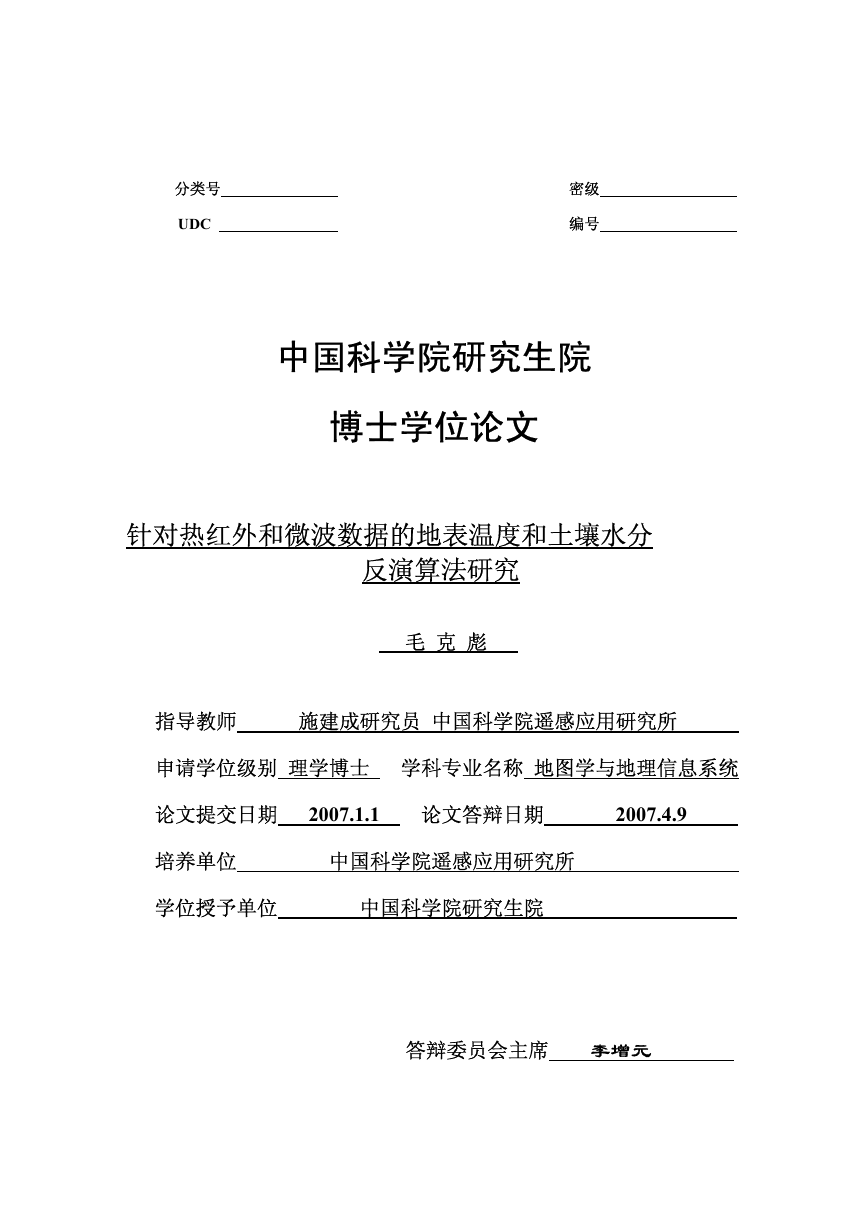


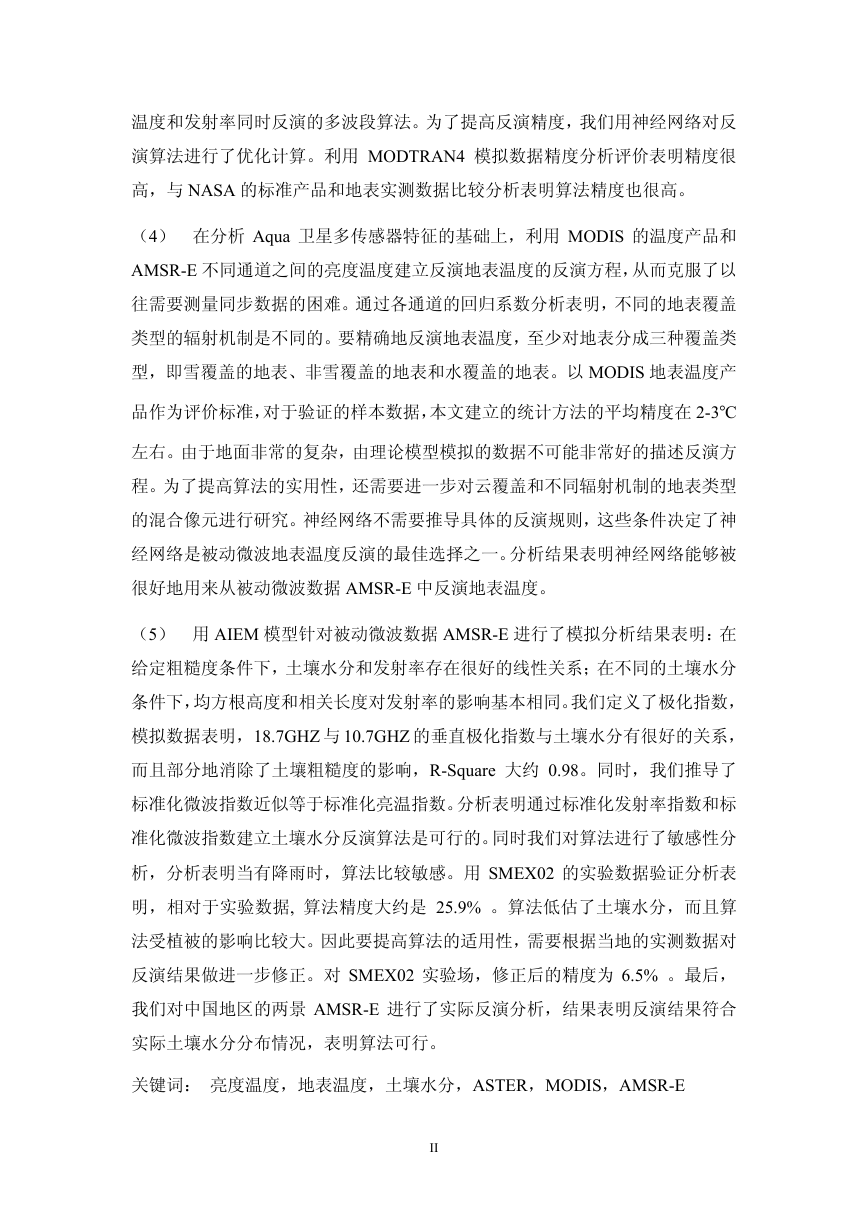
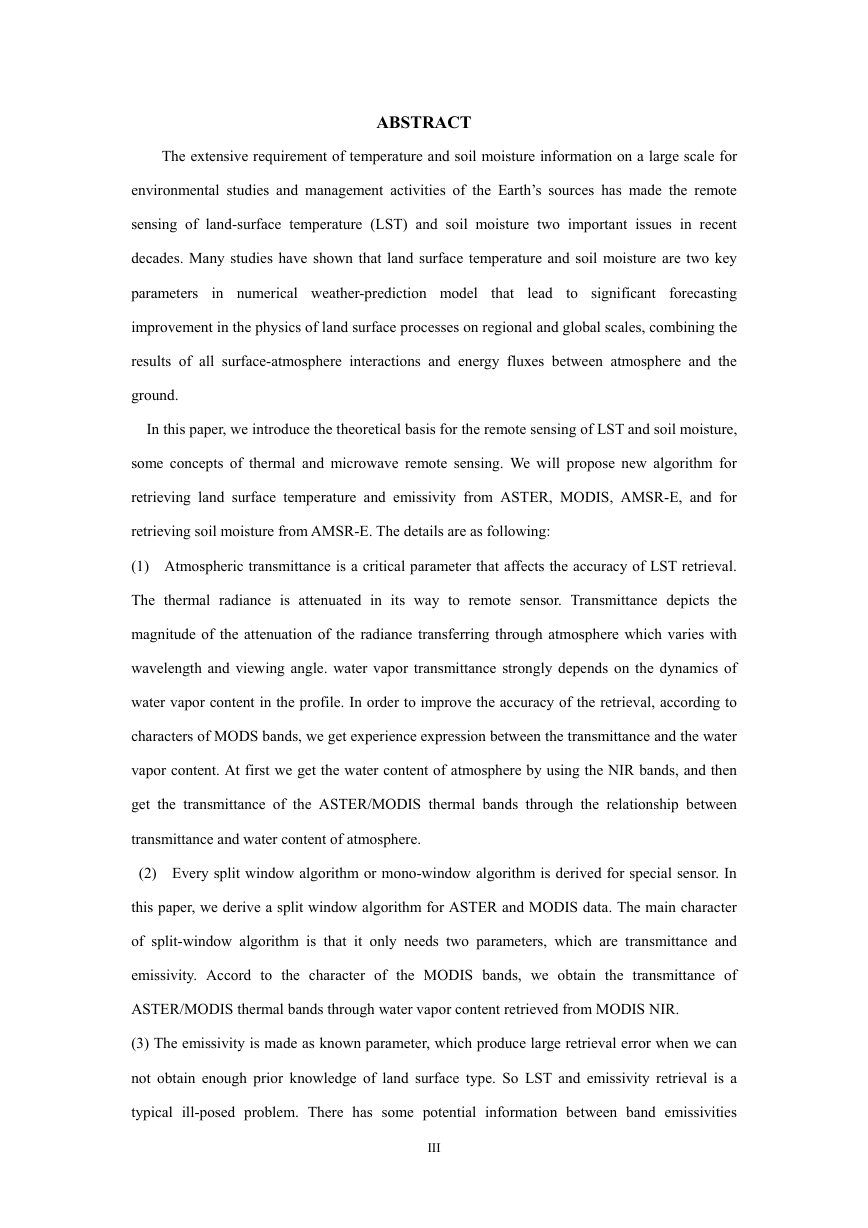
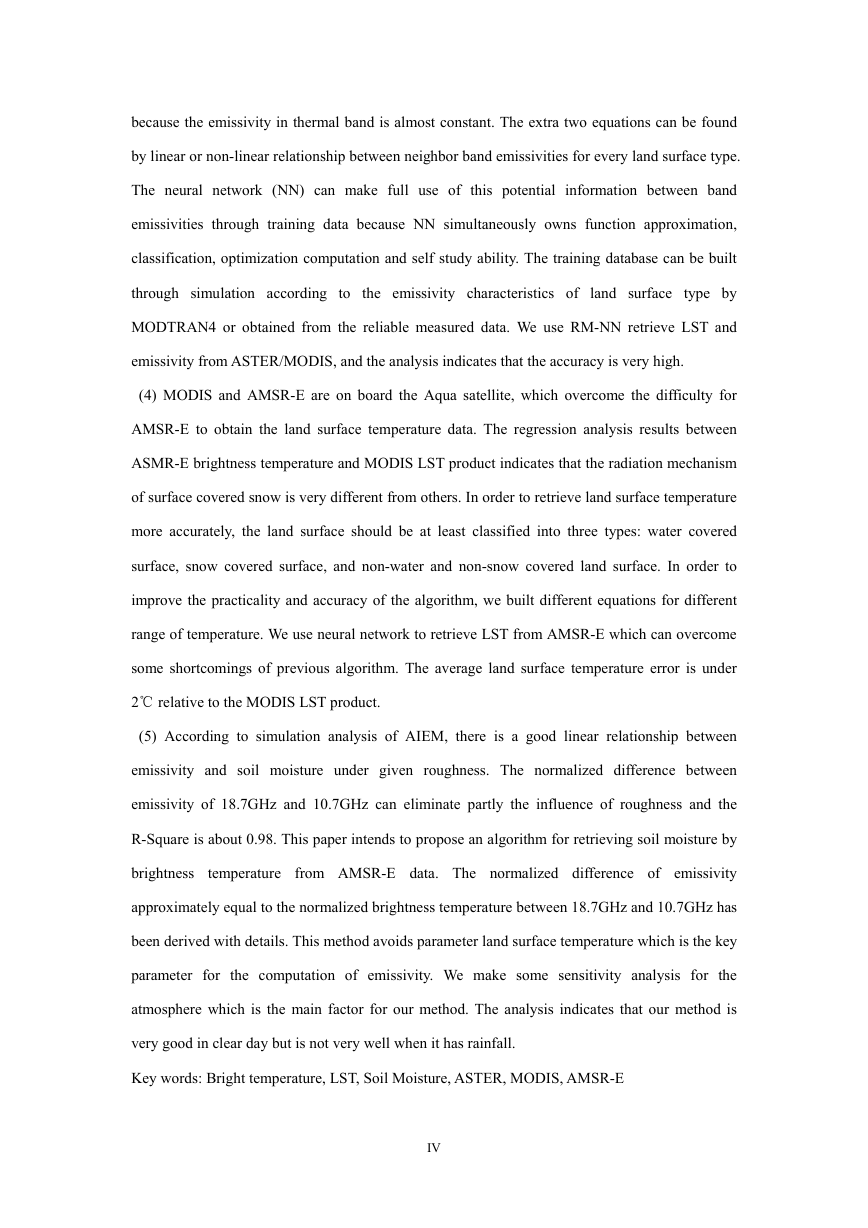

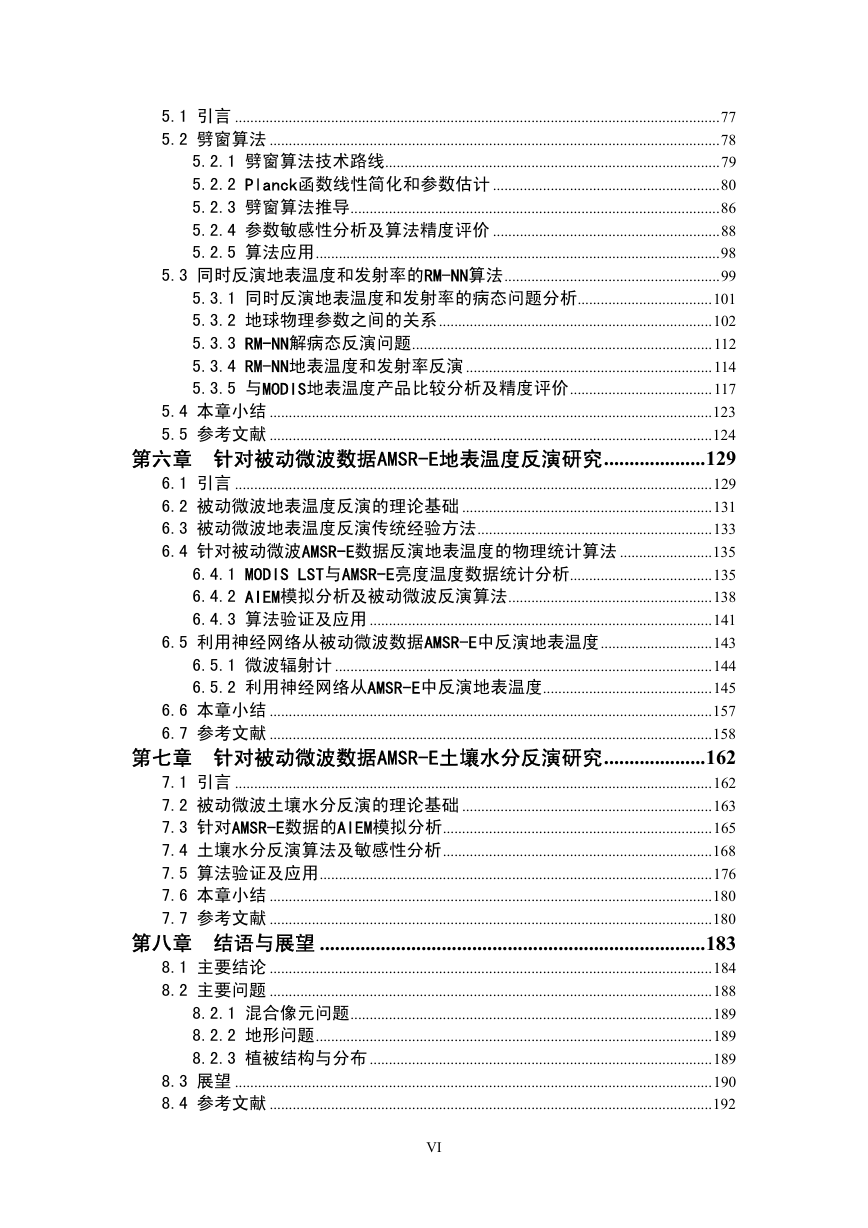








 2023年江西萍乡中考道德与法治真题及答案.doc
2023年江西萍乡中考道德与法治真题及答案.doc 2012年重庆南川中考生物真题及答案.doc
2012年重庆南川中考生物真题及答案.doc 2013年江西师范大学地理学综合及文艺理论基础考研真题.doc
2013年江西师范大学地理学综合及文艺理论基础考研真题.doc 2020年四川甘孜小升初语文真题及答案I卷.doc
2020年四川甘孜小升初语文真题及答案I卷.doc 2020年注册岩土工程师专业基础考试真题及答案.doc
2020年注册岩土工程师专业基础考试真题及答案.doc 2023-2024学年福建省厦门市九年级上学期数学月考试题及答案.doc
2023-2024学年福建省厦门市九年级上学期数学月考试题及答案.doc 2021-2022学年辽宁省沈阳市大东区九年级上学期语文期末试题及答案.doc
2021-2022学年辽宁省沈阳市大东区九年级上学期语文期末试题及答案.doc 2022-2023学年北京东城区初三第一学期物理期末试卷及答案.doc
2022-2023学年北京东城区初三第一学期物理期末试卷及答案.doc 2018上半年江西教师资格初中地理学科知识与教学能力真题及答案.doc
2018上半年江西教师资格初中地理学科知识与教学能力真题及答案.doc 2012年河北国家公务员申论考试真题及答案-省级.doc
2012年河北国家公务员申论考试真题及答案-省级.doc 2020-2021学年江苏省扬州市江都区邵樊片九年级上学期数学第一次质量检测试题及答案.doc
2020-2021学年江苏省扬州市江都区邵樊片九年级上学期数学第一次质量检测试题及答案.doc 2022下半年黑龙江教师资格证中学综合素质真题及答案.doc
2022下半年黑龙江教师资格证中学综合素质真题及答案.doc